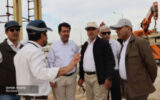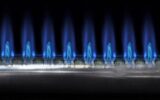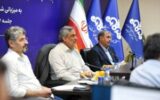
According to data from the Statistical Center of Iran, the imbalance in energy carriers is clearly visible.

Navid Hedayatifar, referring to the gas imbalance crisis in winter, said that replacing 20 million worn-out heaters with high-efficiency heaters could reduce household consumption and allocate the released gas to industries.

Natural gas consumption in the residential, commercial, and small industrial sectors reached about 2 billion 726 million cubic meters last week as air temperatures dropped, and the highest consumption was recorded on Wednesday with about 401 million cubic meters.

The CEO of the Central Iranian Oil Company announced: "In the first half of this year, the company was able to successfully implement its commitments in the field of gas production and gas storage in the Shurijeh and Sarajeh reservoirs."

The Director of Coordination and Supervision of Production at the National Iranian Gas Company announced that with the successful completion of major repairs to refineries and more gas storage than last year, a daily injection capacity of 850 to 860 million cubic meters of gas has been provided to the national network, and a stable supply of winter fuel for the country has been guaranteed.

With the successful completion of major repairs in operational areas and equipment preparation, the Southern Zagros Oil and Gas Exploitation Company announced that it will produce about 162 million cubic meters of gas, 17,000 barrels of oil, and 48,000 barrels of gas condensate daily during the cold season, playing its strategic role in providing the country with sustainable energy.

The head of the country's Passive Defense Organization said: "By maintaining production continuity during the imposed war and implementing passive defense strategies, the South Pars Complex was able to ensure the country's energy security with the support of its employees."

More than a year has passed since the announcement of the Seventh Development Plan; a five-year plan that, by considering major goals such as "increasing production capacity to 4.8 million barrels per day," "increasing petrochemical production to more than 131 million tons per year," and "increasing annual gas exports to more than 40 billion cubic meters," has set a challenging path in the oil and gas sector.

A spokesman for the Tehran Provincial Gas Company announced the consumption of more than 57 million cubic meters of gas in the past 24 hours in the domestic, commercial, and industrial sectors of the province, a 67 percent increase compared to the same day last week.

The CEO of the National Iranian Oil Company, emphasizing the oil industry's full readiness to sustainably supply the country with gas during the cold season, called for a facilitative approach from regulatory institutions to effectively support the industry's national missions.










